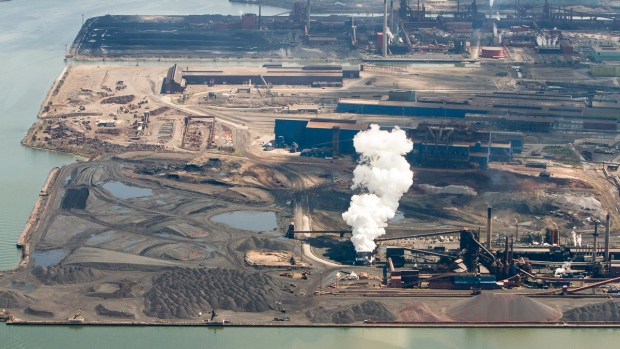Eight Principles for Redeveloping Stelco
With the future of U.S. Steel Canada’s assets settled, it’s time to talk about the redevelopment of land that will no longer be used for steel making. As a community, we need to get ahead of this issue and have a serious conversation about how to best repurpose these lands on Hamilton Harbour so they can be brought back into productive use. Otherwise, we can only wait for new owners and potentially hazardous proposals such as another garbage incinerator. It’s time to have a public conversation now about what we, the community, would like to see on the site.
Let’s consider what we are dealing with: 328 hectares of prime, albeit contaminated, waterfront land. Just how big is that? You could fit about 400 Canadian football fields on the land or about 200 average-sized city blocks. In a word: massive. You could build a sizable town on this land. Check it out on Google maps satellite view to put the scale in perspective. While not all of that land is up for renewal, the majority is.
Consider the following eight principles for reuse of this land:
1. Waterfront access. For more than a century, citizens have been unable to access this part of the waterfront. Whatever new development takes place, we should ensure that public access to the water’s edge is built in.
2. Water quality. We should ensure that new uses do not contribute to further pollution of the harbour.
3. Air quality. The city, and particularly the immediate neighbourhood, have had to bear the brunt of living near heavily polluting industry. We should be aiming for far less noxious uses that can coexist with residential areas.
4. Nature. The industrial area of the city has had a deficit of greenspace, and any redevelopment of the Stelco property should include parkland and ecological restoration.
5. Diversity. This massive site can accommodate many different uses if planned properly. A master plan could include appropriate industrial, residential, recreational and commercial zones. Diversity supports sustainability.
6. Sustainability. As a testament to a new, cleaner, industrial city, we should aim to include sources of renewable energy and sustainable building practices based on the principles of healthy communities.
7. Celebrate our industrial history. Stelco and steel are part of the DNA of the site and this should be incorporated into redevelopment. Retaining some of the amazing plant structures as monuments is one way to do this. Other cities have used decommissioned industrial plants as concert venues or museums.
8. Integration with transportation networks. The site is strongly connected with rail, roads, and water. One could imagine a regional rail transit hub, an intermodal cargo facility, the west harbour shunting yards, or even a Toronto ferry service.
We need to talk now about what we want or don’t want to see for the future of these lands, rather than wait for others to dictate this for us. Given the size of the project, we should invite the federal and provincial governments to the table to form a tripartite agreement to chart a future course for these lands. To raise awareness and solicit the best ideas, we could sponsor an international design competition. We are only limited by our level of imagination, ambition and creativity.
The full original article was published in The Hamilton Spectator.

